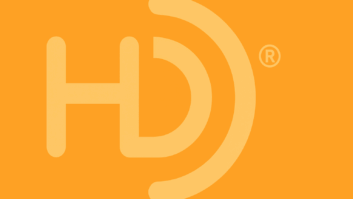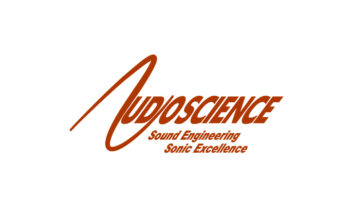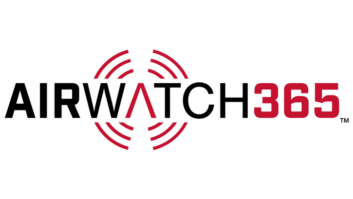IBOC Update � Dec 7, 2005
Dec 7, 2005 10:44 AM, By Mark Krieger, CBT
Stay up to date on the latest IBOC news, business and technology information with the twice-monthly newsletter from Radio magazine.
Index:
- Study Predicts Robust Growth In U.S. Satellite Radio
- NPR Study on KCSN HD Radio Booster Performance Available
- New Alliance Aims to Rev Up HD Radio Rollout
- Canadian Satellite Radio Signs On
- DAB Coverage May Expand to Entire UK
- HD Radio Fires Up In Philippines
- Clear Channel Tops 200 Mark in HD Radio Conversions
- IBOC by State: Vermont
- Guess Who’s Coming to Lunch?</</a>
An Introduction to the New Language Surrounding HD Radio To receive these articles twice a month in your e-mail, subscribe to the IBOC Update – Insight on HD Radio e-newsletter. Click here to subscribe
. News Study Predicts Robust Growth In U.S. Satellite Radio There could be as many as 55 million satellite radio receivers in the United States by 2010, according to a recent study released by Jupiter Research, a division of Connecticut-based Jupitermedia. The report, entitled “U.S. Satellite Radio Forecast, 2005 to 2010,” indicates that growth in satellite radio subscription should expand at a compounded annual growth rate of 35 percent. Sixty-six percent of sales in 2005 will be transportable devices comprising both plug-and-play and hand-held units. This trend will continue though to 2010, which will see 60 percent of sales coming from transportable devices. In-car device sales will grow from 2.5 million units sold in 2005 to 6.9 million units in 2010. The Jupiter Research report finds that XM and Sirius need to move beyond the automobile and integrate satellite radio into other devices to spur growth.
“Transportable devices will lead the installed base mix with sales being driven by wide device selection and lower price points, however, in-vehicle interest has been strong,” said Michael Gartenberg, vice president and research director at Jupiter Research. “Twenty-three percent of online consumers we surveyed demonstrated a strong interest in the service, but overall only 6 percent of online consumers have satellite radio.”
The report points out that the cell phone presents a lucrative opportunity–not for integrating the satellite receiver, but instead for taking advantage of fast wireless networks to offer existing Internet streaming services to current and new customers.
“The signing of big deals such as Howard Stern and Major League Baseball, has raised the stakes for XM Satellite and Sirius, even beyond the initial capital outlays for satellites and subsidized hardware,” said David Schatsky, senior vice president of research at Jupiter Research. “The primary challenges for Sirius and XM are price and competition with other portable media players and music services, such as Ipods and Itunes, respectively.” NPR Study on KCSN HD Radio Booster Performance Available Engineers, consultants and managers interested in the nuances of HD radio signal propagation and performance in situations where co-channel FM boosters are employed will want to download a copy of NPR’s signal coverage report on the performance of KCSN-FM’s hybrid HD Radio booster.
The report is a detailed white paper that describes a series of signal coverage tests conducted by NPR engineers as part of their Tomorrow Radio Project. The tests were designed to see how the coverage of analog and HD Radio digital signal reception from an FM station using a co-channel booster fared in a demanding, real-world environment.
The 18-page report was authored by John Kean and Kyle Evans and includes signal chain diagrams, maps and tables. It’s available for download at euonline.org/kcsn report 1.pdf
. New Alliance Aims to Rev Up HD Radio Rollout Eight of broadcast radio’s largest ownership groups have announced the formation of a strategic alliance designed to kick HD Radio’s rollout into high gear in the United States. Calling itself the HD Digital Radio Alliance, the group’s charter spells out three specific strategic goals:
To cooperatively coordinate the rollout of HD Radio, including multicast channels and formats.
To work as a block to secure lower receiver prices, and OEM receiver options from the major automakers.
To team with receiver producers and retailers in aggressively marketing HD Radio and its applications to consumers. Alliance members also say they have committed more than $200 million in commercial inventory on their own stations in 2006 to promote HD Radio and the multicast channels.
The charter members announced the group’s creation at a press conference in New York on Dec. 6. Founding members are Bonneville International, Citadel Broadcasting, Clear Channel Radio, Cumulus, Emmis Communications, Entercom, Greater Media and Infinity Broadcasting, but the alliance claims the organization is open to all U.S.-based radio groups.
Peter Ferrara has been named CEO of the organization. Among his previous executive positions, Ferrara has served as a senior vice president of Clear Channel Communications, COO of U.S. Radio and Granum Communications, executive vice president of the National Radio Broadcasters Association and board member of the National Association of Broadcasters.
Serving as the alliance’s oversight management committee are Clear Channel Communications president Mark Mays; Greater Media president Peter Smyth; and Infinity chairman Joel Hollander.
Alliance members plan to coordinate their multicast channel formats to optimize program diversity in each market. The groups also claim they will build multicast channel content around the needs and interests of each local markets, and offer those channels commercial-free to consumers for an extended introductory period. Business Canadian Satellite Radio Signs On XM Canada has announced the launch of Canada’s first satellite radio service, and says it will offer special introductory “Founder’s Club” subscription and receiver packages to the about 4,500 Canadians who pre-registered for the new service.
“This is an historic day for consumer choice, for music lovers, hockey fans and for all Canadians, rural and urban,” said Stephen Tapp president, XM Canada.
XM says it will offer play by-play coverage of more than 1,000 National Hockey League (NHL) games per season, in addition to a number of commercial-free music channels.
The company claims that portable and plug-and-play receivers will be available across the country at retailers such as A&B Sound, Best Buy, Canadian Tire, Dumoulin/Audiotronic, Future Shop, London Drugs, Sears Canada, The Source by Circuit City, Visions Electronics and others in time for the Christmas rush.
But XM won’t be alone in the Canadian marketplace. Sirius Canada says it will offer Canadians 100 channels of programming when it begins broadcasting later this month.
“We are launching Sirius Canada with 100 channels of music, entertainment, sports and information,” said Mark Redmond, president of Sirius Canada. “With 60 channels of commercial-free music…sports coverage…and up-to-the-minute news from CBC/Radio-Canada and the BBC…”
The company claims it will be the only satellite radio provider to include 10 Canadian music and information stations in English and French, including a multilingual service. DAB Coverage May Expand to Entire UK British media regulator Ofcom has announced an ambitious plan that would expand British DAB coverage to include the entire United Kingdom, according to a story by the BBC. The move would represent a major increase in England’s commitment to the Eureka 147-based system, as only 10 percent of the country currently receives the digital signals.
Ofcom’s plans call for creating three new platforms, or multiplexes, for local stations and one additional national multiplex to fill in current coverage gaps. That would make space for 74 more local commercial stations and every local BBC station. Under the new plan, analog radio station signals that currently account for 95 percent of all commercial listening in the UK would be placed on DAB, according to the agency.
The radio industry is now being asked for its comments on the plans with the hope of awarding the first new licenses early in 2007.
“Our proposals will give more freedom and more digital capacity to commercial radio,” said Ofcom chief executive Stephen Carter. “We would ask the industry to give careful consideration to our thinking.”
A recent study predicts that 20 million UK homes will have digital radio sets by 2009–up from the current figure of 1.2 million. Guess Who’s Coming to Lunch? With the advent of cellular and wireless broadband streaming audio services already dawning in the United States, many radio programmers have been asking themselves just who’s going to provide all the content for a plethora of mobile subscription audio service providers.
A recent press release provides one piece of that puzzle: “Music Choice, the ground-breaking music network that reaches millions of music fans nationwide through their TVs, PCs and cell phones, will supply its advanced music network capabilities to Mobi TV, the global leader in live mobile TV and digital radio services. Through this partnership Music Choice will help Mobi TV offer more than 40 music channels for its new Mobi Radioservice, the first streaming digital radio service for mobile phones.
Music Choice will deliver a wide variety of non-stop audio music channels, including R&B and Hip-Hop, Hit List, 80s, 90s, Country, Rock and much more. Mobi TV also plans to offer a variety of entertainment, talk and news programming through the Mobi Radio service.
Headquartered in Horsham, PA, Music Choice is a partnership among subsidiaries of Microsoft, Motorola, Sony Corporation of America, EMI Music and several leading U.S. cable providers: Adelphia Cable Communications, Comcast Cable Communications, Cox Communications and Time Warner Cable.”
Even if one grants that Music Choice may have a long way to go before ever reaching those “millions” of fans through cell phones, it’s interesting, if a bit unsettling, to see how the electronic media giants are quietly devising ways to cover all bets on the multimedia table.
Cable and satellite TV audio program services have been around for some time, but because they’ve been firmly tethered to the cable box, they were little cause for concern for radio broadcasters�until now.
Technological upgrades may give a temporary boost to radio in its struggle to maintain a dominant position with American consumers, but news like this gives one pause to consider the adage “content is king” as being truer today than ever before. IBOC Across America IBOC By State: Vermont Ibiquity has a list of stations that have licensed HD Radio technology and notes those that are on the air now. IBOC by state will look at various states and list the stations that are making the transition.
Station Format Market Owner On Air Multicasting WBTN-FM 94.3 Cls/Nws/Inf Bennington Vermont Public Radio No No WVPS-FM 107.9 Cls/Nws/Inf Burlington-Plattsburgh, VT-NY Vermont Public Radio No No WNCH-FM 88.1 Classical Lebanon-Rutland-White River Junction, NH-VT Vermont Public Radio No No WRVT-FM 88.7 Cls/Nws/Inf Lebanon-Rutland-White River Junction, NH-VT Vermont Public Radio No No WVPR-FM 89.5 Cls/Nws/Inf Lebanon-Rutland-White River Junction, NH-VT Vermont Public Radio No No WVPA-FM 88.5 Cls/Nws/Inf Montpelier-Barre-Waterbury Vermont Public Radio No No Eye on IBOC HD Radio Fires Up In Philippines A sign-on of an HD Radio hybrid radio station in the Southeast Asian nation of the Philipines occurred in Baguio City on Nov. 9. The event coincided with the opening of the Kapisanan Ng Brodkasters Pilipinas (KBP) Top Level Management Conference, headlined by Philippines President Gloria Macapagal Arroyo, who delivered the event’s keynote address.
Equipment vendors Broadcast Electronics and Orban provided key hardware and expertise for the station launch, which is operating under a special license by the Philippines’ National Telecommunication Commission (NTC).
The Philippines join New Zealand, Thailand, and Brazil in the recent licensing of HD Radio stations. Clear Channel Tops 200 Mark in HD Radio Conversions Clear Channel Radio says that 200 of its radio stations will be airing HD Radio broadcasts by the end of the month. The 65 markets involved are spread out across the nation. The announcement marks an increase in the number of Clear Channel HD Radio outlets of more than 200 percent in less than one year.
While Clear Channel’s exact plans for market rollouts have not been publicized, it’s clear that the first 200 digital conversions are specifically targeted key markets. When asked about the next wave of station rollouts, Jeff Littlejohn, Clear Channel’s executive VP of distribution deployment, said his company plans to continue its fast track strategy as it moves toward the 1,000 mark. Littlejohn noted that while there is no hard timetable for achieving that figure, Clear Channel executives want to get there as soon as possible, with as many as 95 percent of the company’s top 100 market stations to be converted by the end of 2007. “Clear Channel Radio’s accelerated rollout of HD Radio is helping create a market for superior services for both radio listeners and advertisers,” said Littlejohn. “Our momentum in rolling out HD digital radio, which is ahead of schedule, is an indicator of the company’s enthusiasm about the higher-quality listening experience, strengthened by data services and multicast programming available only through HD digital radio.”
Many broadcasters have noted that the scarcity of HD Radio receivers is impeding the HD Radio rollout. To build consumer awareness of HD Radio, Clear Channel outlets are mentioning HD Radio in promos every hour on stations already converted. The company says it’s also working with retailers, manufacturers and auto OEMs to improve the supply issue. HD Radio Terminology An introduction into the language surrounding IBOC.
Diversity Delay: Imposition of a fixed time delay in one of two channels carrying the same information to defeat non-stationary channel impairments such as fading and impulsive noise.
Hybrid waveform: A transmitted waveform for modes composed of the analog-modulated signal, plus digitally modulated primary main subcarriers. This waveform will normally be used during an initial transitional phase preceding conversion to the all-digital waveform. To receive these articles twice a month in your e-mail, subscribe to the IBOC Update – Insight on HD Radio e-newsletter.
Click here to subscribe
.







